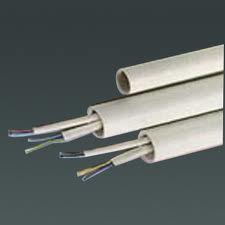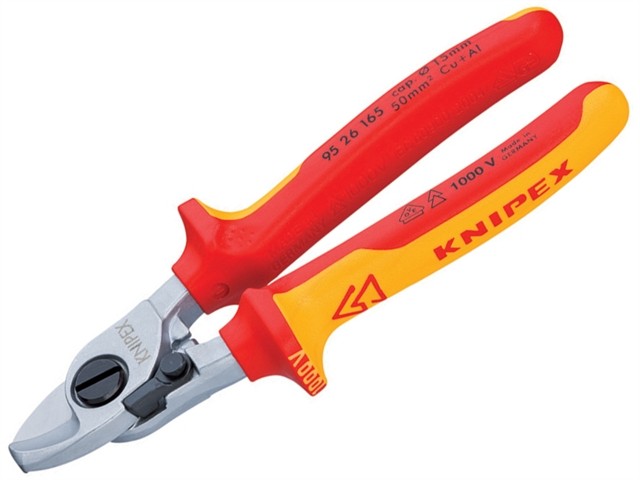The provision of services (Electricity, telephone) in these buildings were usually through vertical service shafts and then, at floor levels, they were concealed in walls and floors in metal conduit. As these buildings aged, modern and upgraded facilities were required (higher current electrical main supplies, door entry, fire alarms, satellite TV etc). The installation of these services has historically been haphazard and it would seem that there has been limited quality control. This has lead to a situation where in many High rise buildings these upgrades are surface mounted and supported by plastic trucking, conduit or clips.
|
|
Photos: tlc-direct.co.uk |
Cabling and cable installation in high rise building can pose three separate issues:
1: Entanglement hazard to Firefighters
2: Breeching of fire resistant compartmentation:
3: Hazardous products of combustion (Dioxins)
There are many BS.EN standards and Codes of practice for electricians installing cabling into these buildings. In the UK BS7671 is perhaps most relevant as it outlines how cables should be supported and directed through walls and ceilings
Entanglement (entrapment in cable)
The entrapment of firefighters in cabling that has fallen or become displaced due to exposure to heat is well documented and has been a contributory fact in both firefighter injury and fatalities. This problem can occur at ANY building type but we will look at this issue in the context of High Rise buildings.

Photo : dailyecho.co.uk
Entanglement is often the result of installation (securing) of cabling using plastic products or fastenings. The most common seen in High rise buildings is plastic trucking or conduit (PVC) and underslung cable tray secures with plastic cable ties (PP, Nylon).
Most common plastics have very low plastic deformation (Vicat softening temperatures) and low melting points. Usually they will range between 100 Deg C and 200 Deg C. In relation to expected ceiling temperatures of 1000 Deg C plus; these products will fail at the earliest stages of an incident.
This can leave what has been described as a "spiders web" hanging ready to ensnare firefighters. It is often forgotten by installers and inspectors that firefighters work in a zero visibility environment and they wear complex and restrictive PPE and Breathing apparatus (BA)that often helps to compound the problem.
Photo: Mark Fishlock Photo: Mark Fishlock |
|
Hampshire FRS (UK) have done some innovative research into the mechanism of Firefighter entanglement and have evolved a cheap and simple modification to their BA sets.
This removes the main entanglement risk (i.e. that between the wearer and the Air cylinder) The strap sits between the harness backplate and is attached to the air cylinder cover.
This approaches the problem in a 'prevention is better than cure' way.
|
Many UK FRS are now issuing (or researching into the use of) wire cutters or cable shears, to be worn by BA Teams. They are hand held and usually VDE 1000V rated, capable of cutting through 16-50mm cable
|
Photo: dooyoo.co.uk |
Dealing with cable entanglements requires a calm and well practiced approach. The key issue is to not make a bad situation worse. If one team member is entangled the second (assisting) team member must approach with extreme caution. Be slow and methodical in any cable removal. work from the top down paying particular attention to the 'snag points' on the BA set.
Compartmentation:
The installation and maintenance of fire resistance compartmentation is critical to High rise fire survivability. Compartmentation allows time for occupants to evacuate or be rescued. It also allows a safe approach and tactical vantage point for Fire fighters.
It is the installers res pons ability, when installing or replacing cabling in a building which has fire resisting compartmentation, to reinstate or maintain any existing levels of protection.

The importance of maintaining compartmentation is often overlooked, not appreciated or is ignored as a cost saving measure. Even the smallest of breeches in structural elements of a building can lead to catastrofic fire or smoke spread.
Hazard from products of combustion and decomposition.
Most Electrical cables are sheathed or protected with Polyvinyl Chloride (PVC), polyethylene (PP),or Thermoplastic Urethane (TPU).
In a fire, these plastic material releases Dioxins (a range of complex chemical compounds), Hydrogen Cyanide and Hydrogen Chloride.
Dioxins are extreemly harmful to life, Hydrogen Cyanide (HCN) and Hydrogen Chloride (HCl) are both poisonous gas's. Hydrogen Cyanide is highly toxic ( 35 times more toxic than Carbon Monoxide) and Hydrogen Chloride is a poison that forms Hydrochloric acid when it comes in contact with water
WORK IN PROGRESS Aug 2012



